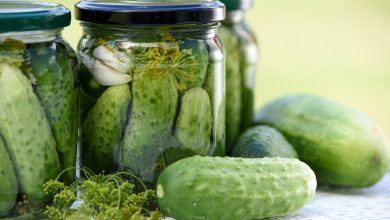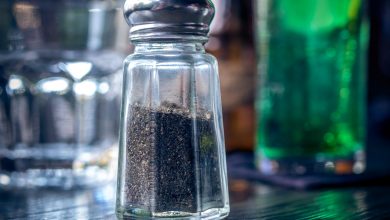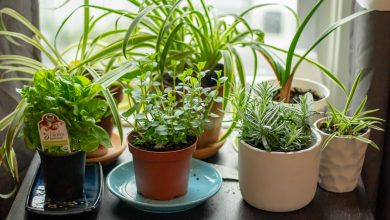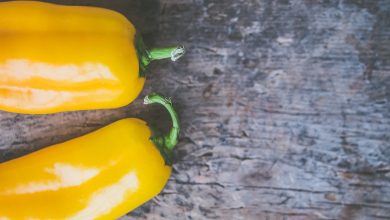How to Cook Fresh Food from the Garden
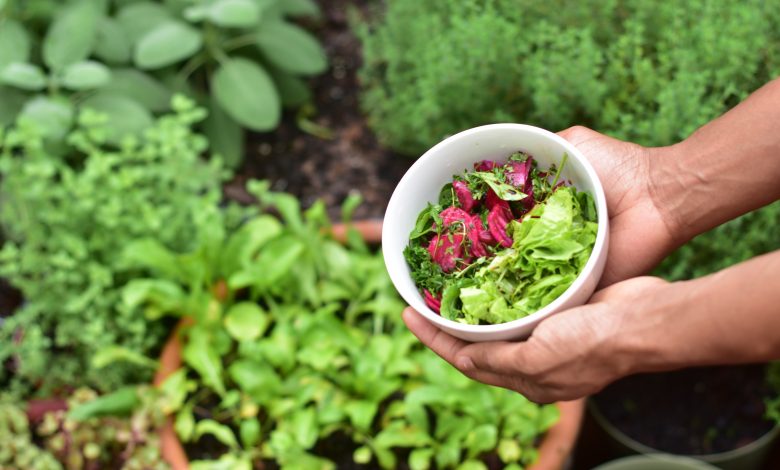
Growing food straight from your garden is immensely rewarding. You know the food you’re eating is as fresh as possible, and you end up paying pennies for your meal compared to eating out or buying from the grocery store. But to master the art of cooking fresh food from the garden, you need to have a plan in place, grow a variety of plants, and know how to use them.
Start with a Raised Garden Bed
Having a dedicated space for your food-producing garden helps grow plants more efficiently. With a raised garden bed, you can choose precisely what soil goes into the garden and can make sure that each plant has plenty of room to spread their roots without competing with grass and weeds.
When you want to step up your gardening game, you can start incorporating multiple raised beds, each for a different type of food. Various plants prefer different types of soil, so it makes sense to grow them in separate environments. Tomatoes, for example, do not like very acidic soil. But blueberries are the opposite and prefer an acid-rich environment. Research in advance to see which soil your plants grow best in and group them accordingly.
Also, keep in mind that your plants will grow to much larger sizes when they mature. You might be surprised just how big your cucumber or tomato plant can get. Make sure each plant has enough room to spread out when designing your garden bed. These bigger plants have roots that need room to grow, and one plant can crowd out another plant’s sunlight if they’re too close together.

Diversify Your Garden
To consistently cook fresh food from your garden, you’ll need to be well-diversified. If you’re just getting started growing food, you may want to start small. If you’re ready for more of a commitment, though, don’t limit yourself. But realize that growing food requires daily care. Your plants will need water every day, and you’ll want to track how everything is growing so that you can harvest at the right time.
Plan Ahead
Your plants will all grow at different rates, so you’ll need to plan out when everything will be available in advance to consistently make meals. You’ll also want to plan for extras. Once a plant starts producing, you may find that it’s generating way more food than you need.
If you don’t have a plan and you end up with a lot of extra food, the last thing you want to do is throw it straight into the trash can. But if you have a good idea of what you’ll be doing with your produce, you can take advantage of every single fruit and vegetable.
Apps for Planning a Garden
- From Seed to Spoon – From Seed to Spoon is an excellent resource for quickly seeing what conditions any kind of food grows best in. You can easily add your favorites to a list, and features include plant tracking, seed sprouting, harvest estimates, and gardening-specific weather updates.
- GardenTags – This app is a one-stop-shop for everything related to your garden. It’s also community-based. You can follow other like-minded gardeners and seek out or provide advice. There is a helpful plant encyclopedia as well. Unfortunately, many of the app’s features are locked behind a “Premium” paywall.
- Gardenia – Gardenia is similar to GardenTags, and while not quite as feature-laden, it’s completely free. You just add your plants and can find useful information on how to care for them.
- My Garden – This is my personal favorite because it combines all the best features of these other apps and does it for free. You create projects, add your plants, and track their progress. It also has helpful videos, supply lists, and much more.

Harvest When Ripe
This may sound obvious, but the timing of when you harvest your food will determine its quality. Erring on the side of caution is recommended here. If you pick food just before it’s ideal ripeness, you still end up with tasty and firm produce. But if you wait too long, your food will start busting at the seams and go bad.
Knowing when to harvest can sometimes take practice before you perfect it. But watching videos or looking at pictures of what your food should look like before harvesting can help prepare you.
Meals and Sides You Can Make from your Garden
The number of meals you can make from your garden is endless, but here are a few tasty meals to keep in mind when planning out what you want to grow.
Stuffed Poblano Peppers
You’ll need some Spanish rice, half a pound of ground meat of your choosing, enchilada sauce, and Mexican cheese. Cook the meat in a skillet, prepare the rice, and add the rice to the meat. Cut the poblanos in half lengthwise and broil in the oven for five minutes. Fill the peppers with the meat and rice, top with enchilada sauce and cover with cheese. Broil for two minutes, and garnish with fresh cilantro from your garden.
Cucumber, Tomato, and Basil Salad
All three of these can blissfully grow together in your garden and combine to make a perfectly light, fresh, and crunchy salad. In addition, you’ll just need some salt and pepper, a quarter cup of olive oil, and two tablespoons of red wine vinegar. Toss and enjoy.
Fried Green Tomatoes
Tomatoes are one of the best foods to grow in your garden because they have so many different uses. You can eat these on their own, with a dipping sauce, or even on a bacon, lettuce, and fried green tomato sandwich.
Garlic Beans
If you’re growing beans, you must make yourself some garlic beans. Get together a pound of fresh beans. In a frying pan, melt three tablespoons of butter, then add as much minced garlic as you want along with the beans. Pull out some garlic salt and garlic powder and season to taste. Cook on medium-low heat for about 20 minutes and enjoy these mouth-watering beans.
Zoodles
If you’re a vegetarian or just cutting down on gluten, you can try zoodles as a substitute for spaghetti noodles. Zoodles are made from zucchini that has been pressed through a spiralizer. They turn into a light and buoyant noodle-like shape and go great with a pot of sauce and whatever else you’d like to add to the dish.

Pickle your Leftovers
Pickling vegetables is an age-old tradition that dates back to 2400 BCE as a way to preserve food. Of course, everyone is familiar with pickles, the crunchy snack and burger staple that results from pickling a cucumber. But you can pickle all sorts of food, not just cucumbers. Whenever you’re picking food for pickling, make sure to choose fresh, firm produce, and always wash before jarring.
Here are some examples of food you can pickle:
- Cucumbers – Pickles started it all. You’ll want to select the firmest, crispiest cucumbers you can find for making pickles. Smaller cucumbers work best.
- Cabbage – Cabbage is one of the most fun vegetables to pickle. Fermented cabbage can become sauerkraut, the German staple, or it can develop into the delightfully crunchy Korean dish, kimchi.
- Beans – Make sure the beans are fresh and crisp and wash before pickling. If you want spicy beans, add some chilies to the mixture.
- Peppers – Pickled peppers are delicious if you like a little spice. Pickled jalapeños just need a mixture of salt and vinegar and go great on eggs. Use a cup of water, a cup of white vinegar, two cloves of garlic, one tablespoon of salt, and two tablespoons of sugar. Boil it all in a medium pot, add the jalapeños, remove from heat, and let it sit for eight to ten minutes. Now all you have to do is jar the jalapeños and cover with the brine.
- Beets – Remove the skin of the beets and add some sweet onions for extra flavor.
- Carrots – Carrots are sometimes sweetened with sugar when pickled and are usually spiced to your liking. Carrots combine well with all sorts of other vegetables, so mix and match to find your favorite.
My favorite way to take advantage of your garden through pickling is making hot giardiniera. Giardiniera is a staple on Italian beef sandwiches and uses up so many growable items that you can jar it for days. Here’s a recipe for making hot giardiniera:
- Two green bell peppers, diced
- Two red bell peppers, diced
- Eight jalapeños, sliced
- One celery stalk, diced
- One medium carrot, diced
- Half cup of cauliflower florets
- Half cup of salt
- Two cloves garlic, chopped
- One tablespoon dried oregano
- One teaspoon red pepper flakes
- Half teaspoon black pepper
- One five-ounce jar of pimento-stuffed green olives, chopped
- One cup white vinegar
- One cup olive oil
Put the peppers, celery, onions, carrots, and cauliflower into a bowl. Fill with cold water to cover and add salt. Cover and refrigerate until the next morning.
Drain the water and rinse off the vegetables. In another bowl, add olives, red pepper flakes, black pepper, oregano, and garlic. Add the olive oil and vinegar and mix. Lastly, add the vegetables to the mix, cover, and refrigerate. Two days later, you’ll have some delicious hot giardiniera.
